Last Updated on: February 5, 2025
Gifted with forests, grasslands, fields, lakes, rivers, and marshes, the Badger State has diverse habitats that attract wildlife.
Hence…
It is not surprising that a wide array of bird species resides in the state.
Wisconsin has a diverse bird population. It is home to over 300 species, including regular residents and seasonal visitors.
If you are clueless about the birds that you see roaming the skies of Wisconsin, then read on. We’ll identify the most common species that flock to the state.
Physical Characteristics, Habitat, And Diet Of The Birds Of Wisconsin
1. American Robin

One of the most common backyard birds in Wisconsin, American robins are regulars on lawns. Instead of flying, they are digging on the ground, looking for earthworms to eat.
These gray and brown birds sport a white throat, red breast, and white splotches surrounding the eyes. Both sexes look alike, but females are often duller.
It is comfortable around humans, so you can find them almost anywhere in the state. Some of their preferred habitats are lawns, parks, fields, mountains, and forests.
Aside from earthworms, American robins also eat snails, fruits, and insects. You can lure them into backyards by installing bird feeders with mealworms, peanut hearts, and sunflower seeds.
The American robin is the state bird of Wisconsin. Even so, it is a migratory bird, which you can see only in the summer.
2. Northern Cardinal
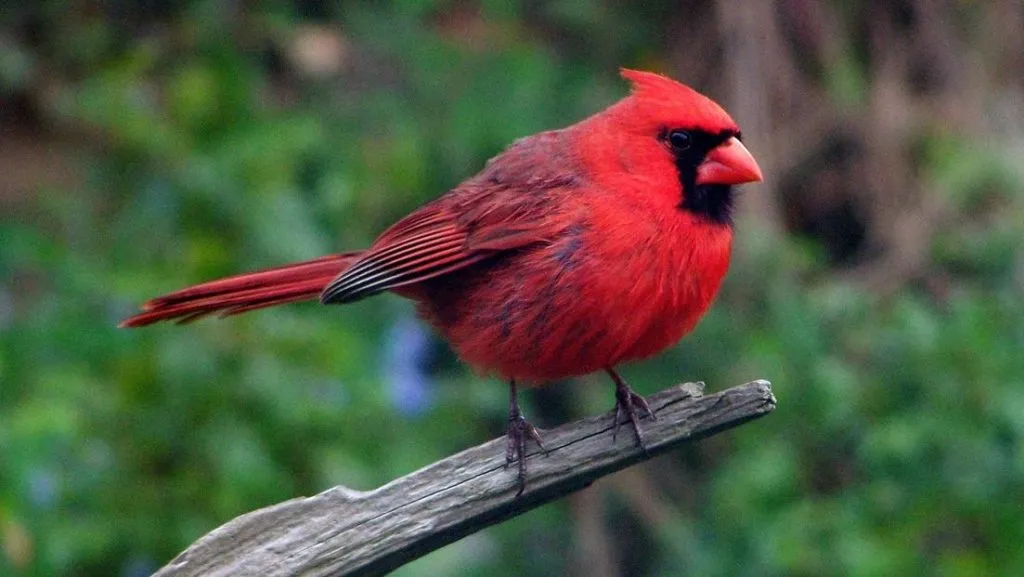
With the striking all-red plumage of male northern cardinals, they are impossible to miss. They also have a black mask and throat. Meanwhile, females are pale orange-brown with hints of red on the tail, wings, and crest.
The northern cardinal is a common sight in a bird feeder. Attract them by supplying their favorite food, including peanuts, safflower seeds, corn, and sunflower seeds. It also helps to have fresh water in a bird bath.
Both male and female northern cardinals sing. They make a series of clear-whistled songs.
As for their diet, the favorite of a northern cardinal is black oil sunflower seeds. However, they can also consume berries and nuts in trays and hopper feeders.
3. Common Yellowthroat
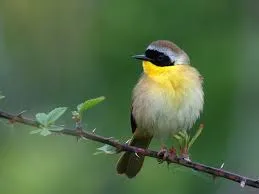
Present in Wisconsin during the breeding season, the common yellowthroat starts coming in May and will stay until October before they start migrating.
A small songbird, the average length of the common yellowthroat is 4.3 to 5.1 inches. Meanwhile, it has a wingspan of 5.9 to 7.5 inches.
As for its color, one of the defining features is the bright yellow throat and underbody. The back is brownish. Males have black masks on their faces.
Those who want to see common yellowthroat in Wisconsin should head to wetland areas and marshes. You can find them in areas with dense and thick vegetation.
4. Blue Jay

One of the most iconic birds in the state, the blue jay is easily recognizable. It has blue wings with white lines and black accents. Meanwhile, the under-belly and breast are light gray or white.
You will see blue jays in Wisconsin throughout the year. However, they are most abundant from August to November during their migration.
Aside from their bright colors, you can also easily detect the presence of these backyard birds because they are noisy. They often travel in groups, flying to places where they can find acorns. Blue jays also eat insects, seeds, nuts, and grains.
5. Dark-Eyed Junco

A medium-sized sparrow, the dark-eyed junco has a conspicuous tail, round head, and stout bill. The colors can vary from one region to another, but most of them are dark brown or gray with white outer tail feathers and a pink bill.
In the summer, dark-eyed juncos prefer coniferous forests. As it gets colder, however, they are more common in parks and backyards.
Dark-eyed juncos are easy to lure into backyard feeders. Offer them peanuts, millet, and cracked corn. For the best outcome, use platform bird feeders.
Most of the time, you will see a dark-eyed junco spending its time on the ground. It hops on the bases of shrubs and trees as it looks for fallen seeds.
6. Downy Woodpecker
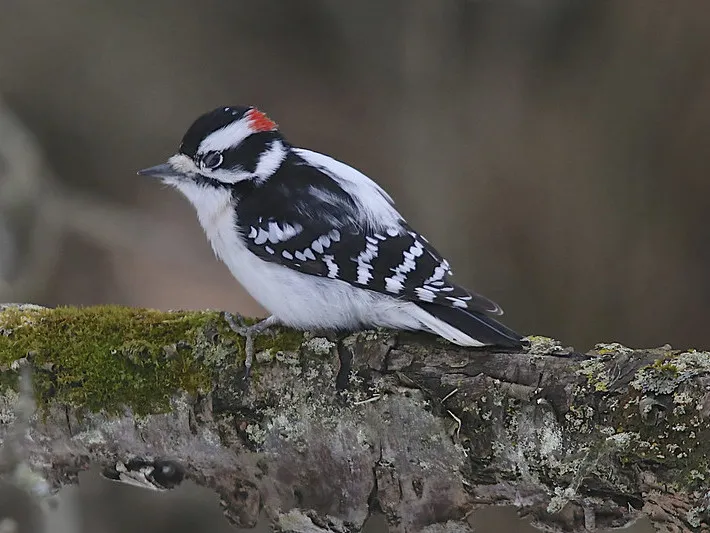
With its checkered black and white patterns, it is easy to identify a downy woodpecker once you have seen one. Males have a small red patch at the back of its head, which you won’t find in females.
The downy woodpecker is the smallest woodpecker not just in Wisconsin but in North America.
Woodlots, especially those around streams, are the preferred habitats of downy woodpeckers. They are also frequent visitors to backyards and city parks.
If you want them to be in your backyard, provide their favorite food – suet. However, they will also eat various insects, including ants, beetles, and caterpillars.
7. Red-Bellied Woodpecker
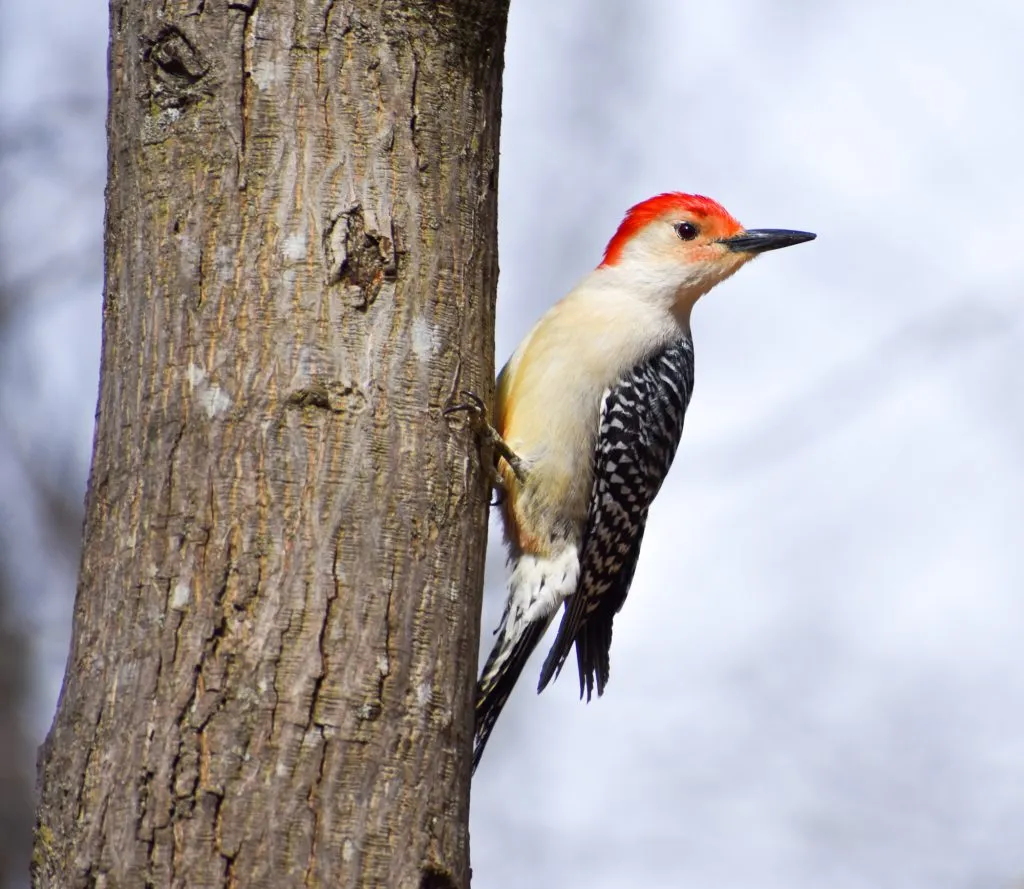
With their red caps, a lot of people might confuse a red-bellied woodpecker with a red-headed woodpecker. One of the main differences between the two, however, is the red-bellied woodpeckers are smaller.
With its name, a lot may look for the bright red belly in this woodpecker. However, such is pale, and hence, almost unnoticeable, especially from afar.
Seeds, spiders, insects, nuts, and fruits form most of the diet of red-bellied woodpeckers. They can even eat nestlings.
If the red-bellied woodpecker is a part of your Wisconsin birding itinerary, then we recommend that you visit wooded areas. At times, you do not even have to go far since they love a backyard bird feeding station.
8. Ruby-Throated Hummingbird
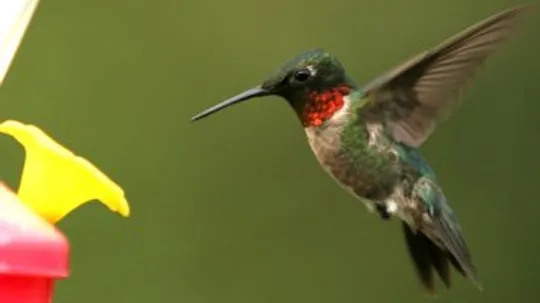
Small but stunning, this Wisconsin bird has an emerald green or bright green crown and back. The underside is gray-white. Meanwhile, the distinguishing feature is the red throat, although you will find such only in males.
The ruby-throated hummingbird is most common in Wisconsin in the summer. Once it gets cooler, the bird will migrate to Mexico. They will move to Central America through Mexico.
Males are known for their aggressiveness. They will attack birds that will try to get hold of their feeders and flowers.
Those who are looking for ruby-throated hummingbirds in Wisconsin should check out woodland edges and flowering gardens. They also love places with nectar and hummingbird feeders.
9. Yellow Warbler
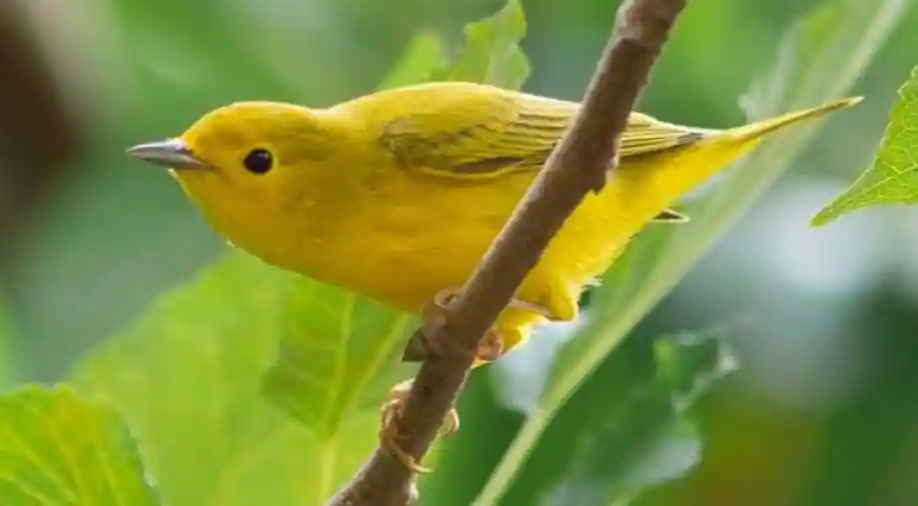
From April to October, you will see yellow warblers in Wisconsin as they breed in the state. They have evenly proportioned bodies, straight bills, and rounded heads.
As for their colors, they are uniformly yellow. A male yellow warbler is colored egg-yolk yellow with red streaks under the body. Both males and females have yellow patches on the tail. More so, they have large black eyes.
Shrubby woods and thickets are some of the most common places in Wisconsin where you can see yellow warblers. They like areas with trees like cottonwood, alder, and willow. In the winter, they migrate to Central and South America where they inhabit mangrove forests.
10. Black-Capped Chickadee
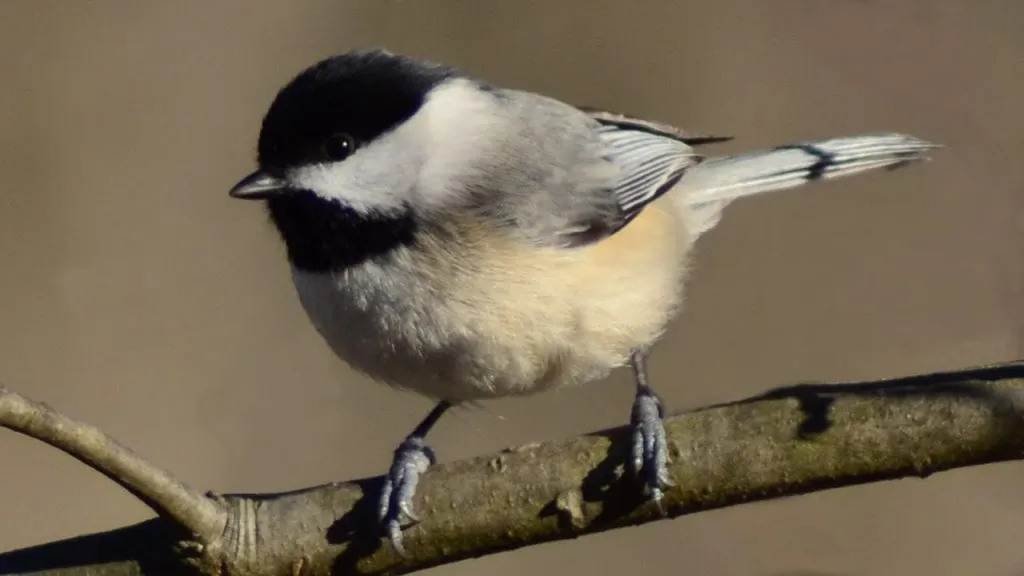
Whether it is summer or winter, you will find black-capped chickadees in Wisconsin since they are year-round residents of the state. They do not migrate, and you will often find them in marshes, shrubs, and forests.
A black-capped chickadee has white and gray wings, tiny bodies, and big round heads. Their most distinctive physical feature, however, is the black cap.
Once you have installed a bird feeder in your backyard, the black-capped chickadee is one of the first visitors. Lure them by providing black oil sunflower seeds, suet, and peanut.
You can also identify black-capped chickadees through their sounds. They are vocal, so you can hear their songs even without going near.
11. House Sparrow

A male house sparrow has white cheeks, chestnut sides, a black bib, and a gray crown. The back is mostly brown with black streaks. Meanwhile, females are duller and with black streaks on the back.
There is no need to go far if you want to see house sparrows in Wisconsin. They have high adaptability, so you will find them almost anywhere. They can live in places where humans are.
If you want to attract house sparrows, install a bird feeder with grains. It will also eat sunflower seeds.
House sparrows are invasive species, competing with other birds. With this, a lot of people do not like having them in their backyards.
12. Song Sparrow
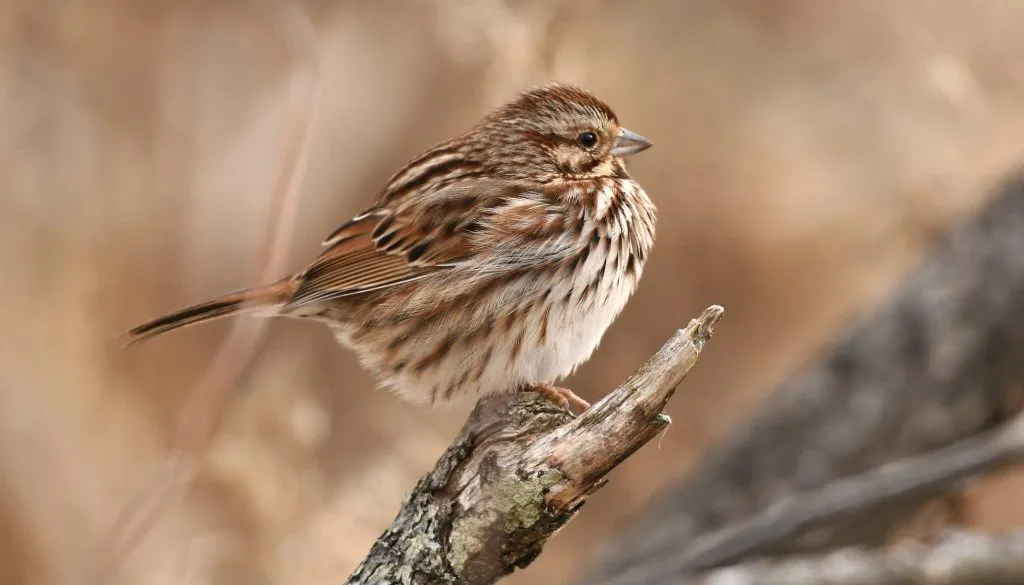
With too many types of sparrows, they can be difficult to identify. With the song sparrow, look for the brown streaks on the chest until the breast. The head comes with a brown crown. Meanwhile, the body and back are rust-brown.
While most birds nest in trees, song sparrows are different because they prefer nesting in grasses and weeds. They will nest directly on the ground.
The song sparrow has diverse habitats. They thrive in open and wet areas, such as marshes. They are also common in backyards, especially when you have bird feeders.
For their diet, song sparrows eat insects, such as caterpillars and beetles. They also like rice, wheat, buckwheat, sunflower, and wild cherries.
13. Red-Winged Blackbird
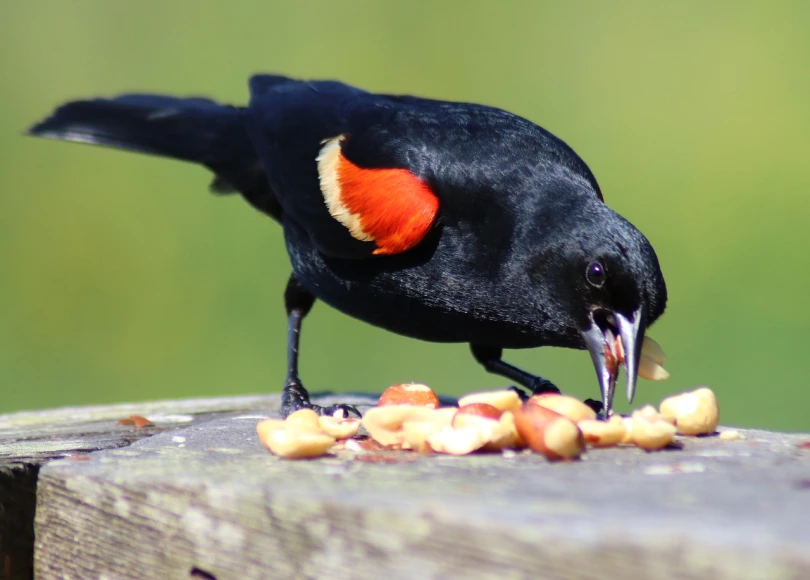
With their glossy black head, wings, and bodies, red-winged blackbirds are easy to identify. The easiest way to distinguish this bird is to look at the red and yellow shoulder badge, which makes the bird stand out.
In the breeding season, you will find red-winged blackbirds in wet areas, such as marshes. When it is non-breeding, on the other hand, they like to spend their time in pastures, farm fields, and grasslands.
More than their colors, you can also identify a red-winged blackbird through its sounds. They have a rich and musical call that lasts up to one second.
14. House Finch
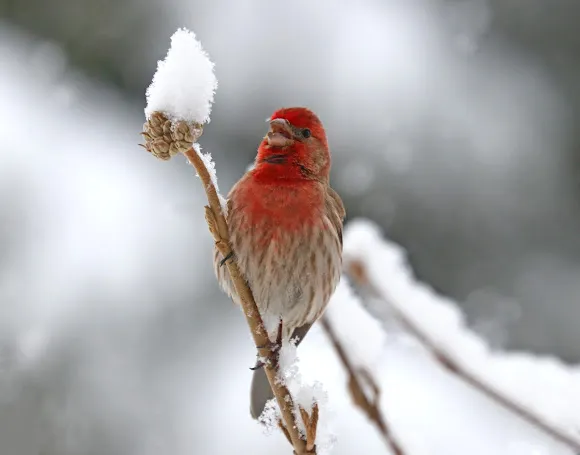
One of the most frequently spotted backyard birds in Wisconsin, the house finch is a year-round resident of the state.
To identify male house finches, look for their red breast and head. The rest of their bodies have brown streaks. On the other hand, females are brown-streaked throughout their bodies.
It is almost impossible to miss the presence of house finches because they are noisy. They often gather in flocks on farms, forest edges, parks, and even backyards.
If you want to attract these birds to backyard feeders, provide them Nyjer seeds or black oil sunflower seeds.
15. Mourning Dove

You will know when mourning doves are around because of their sad cooing, appearing as if they are mourning. This is where the bird got its name.
Aside from its songs, you can also identify a mourning dove by looking at its body. It has a long tail and a small head. The color is a soft brown with prominent black spots.
It is common to see mourning doves perched on telephone wires. Alternatively, they can also walk on the ground as they look for scattered seeds to eat.
Mourning doves are curious. They are amongst the first bird species that will come to new backyard feeders.
16. Hairy Woodpecker
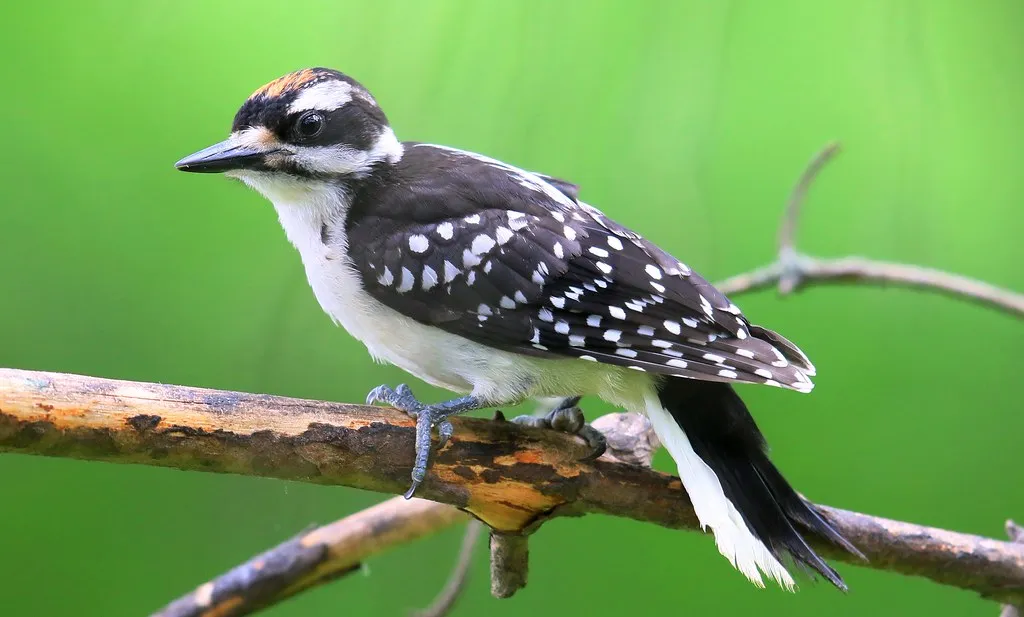
Another year-round resident in Wisconsin, hairy woodpeckers look like downy woodpeckers. The main difference is that the former has longer and larger bills.
Visually, the hairy woodpecker has black and white patterns throughout its body. There is also a white patch at the back. Males are distinguished from females through the red patch at the back of the head.
Woodlands are some of the most common places where a hairy woodpecker resides. It likes to stay on large tree branches and trunks. They are also present in parks and cemeteries.
The diet of downy woodpeckers is mostly insects. It will eat ants, wood-boring beetles, and caterpillars.
17. Brown-Headed Cowbird
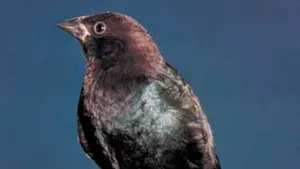
True to its name, brown-headed cowbirds have brown heads. Males have a glossy black plumage while females are brown throughout their bodies.
Why are they called cowbirds? The latter is a reference to their habit of following cows while searching for insects to eat from grazing mammals.
Like other blackbirds in the state, the most common places where you will see brown-headed cowbirds are in woodland edges, prairies, brushy thickets, and grasslands. They can also be present in residential areas, as well as cemeteries, orchards, and pastures.
A brown-headed cowbird will eat seeds and insects. In the summer, half of its diet is seeds. In the winter, seeds make up 90% of the bird’s diet.
18. White-Breasted Nuthatch
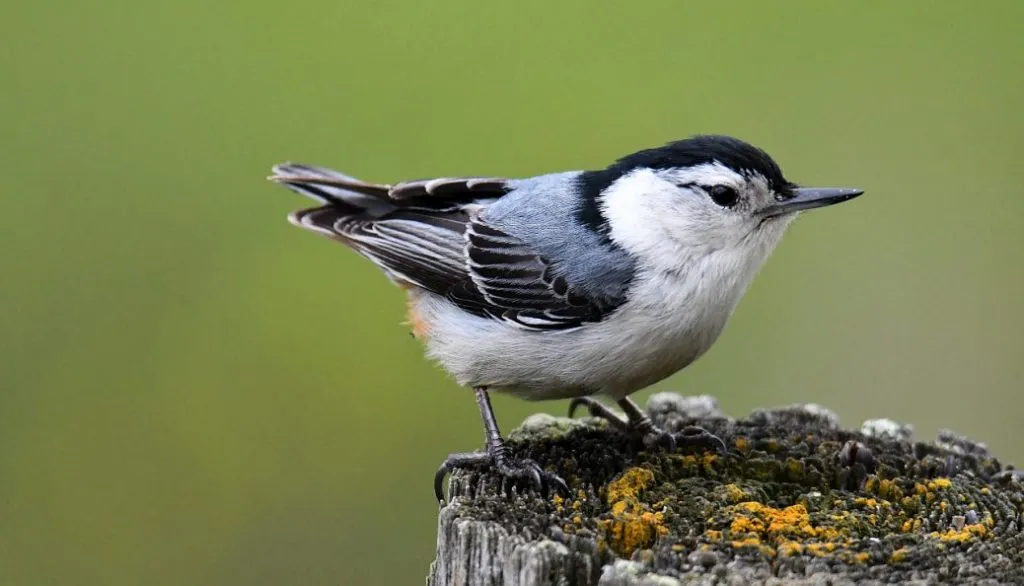
Male and female white-breasted nuthatches look almost the same. One of the main differences is that males have a black cap on the head while females have light brown or gray caps. Both sexes have pointy bills, short tails, and white cheeks.
It is most common to see white-breasted nuthatches in deciduous forests. They are also adaptable, so you can find them in places with humans, such as wooded backyards and parks.
If you want to attract a white-breasted nuthatch, you will need bird feeders with mealworms, safflower seeds, suet, and peanuts.
19. Gray Catbird
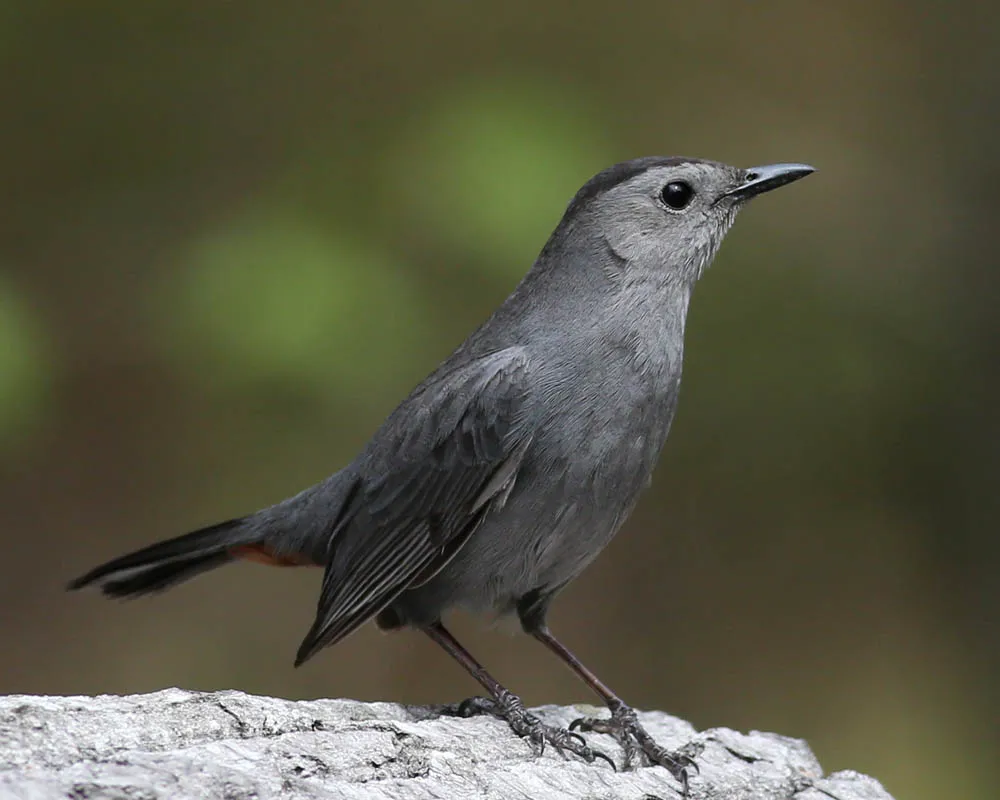
A medium-sized songbird, the gray catbird has an almost all-gray body. If you look closer, however, you will notice that it has a small black patch on its head and a black tail. Other physical characteristics include a straight and narrow bill, broad and rounded wings, and long legs.
While it is energetic, gray catbirds are secretive. They are hesitant to roam in open areas, making them quite hard to spot.
Ever wondered where the gray catbird got its name? It has a distinctive song that sounds like a cat, which lasts up to ten minutes.
20. Baltimore Oriole

When listing down the most common backyard birds in Wisconsin that most people can easily recognize, it is impossible to miss the Baltimore oriole.
Their colors signal the arrival of spring in North America. Males have orange and black bodies, made even better by their white wing bars. On the other hand, females are duller but equally stunning.
Most of the time, a Baltimore oriole is on the top of deciduous trees. They are most common in open woodlands, swamp edges, and forests.
Take note, however, that Baltimore orioles are migratory birds in Wisconsin. You will see them only in the breeding season, which runs from April to September.
21. European Starling
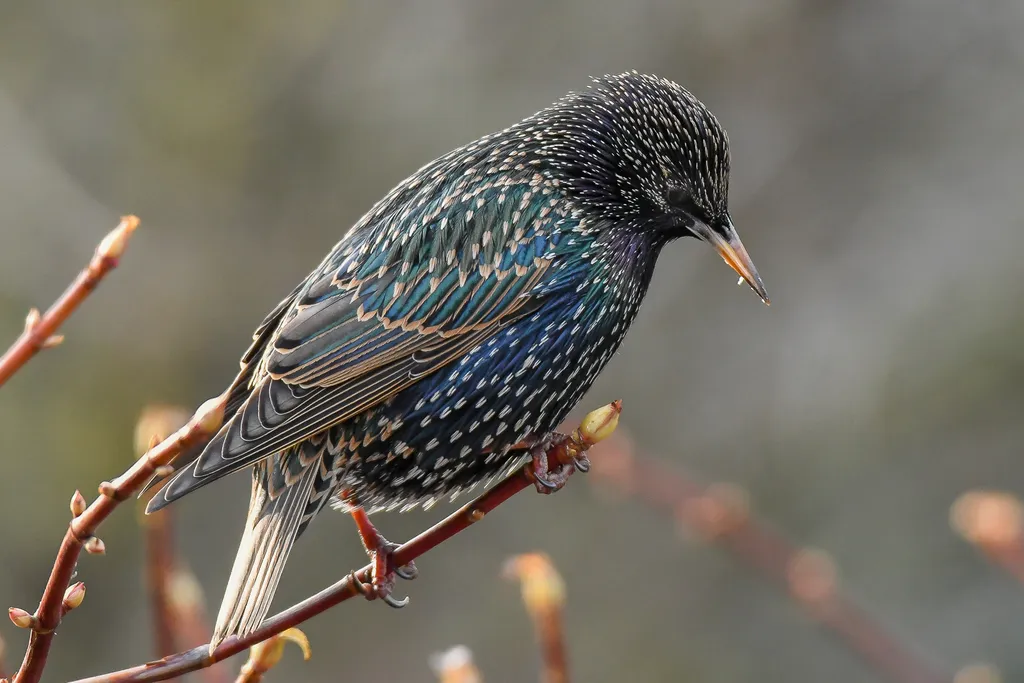
Brought in the United States by Shakespeare enthusiasts, the European starling is now one of the most common birds in the country, as well as in Wisconsin.
Unlike most of the other backyard birds on this list, a lot of people do not welcome European starlings in their backyards because they are invasive species. They can become aggressive and annoying, especially when they visit in large flocks.
The European starling has a black plumage, which appears glossy in the right lighting. Breeding adults are darker. Meanwhile, in the winter, these birds are duller.
22. American Crow
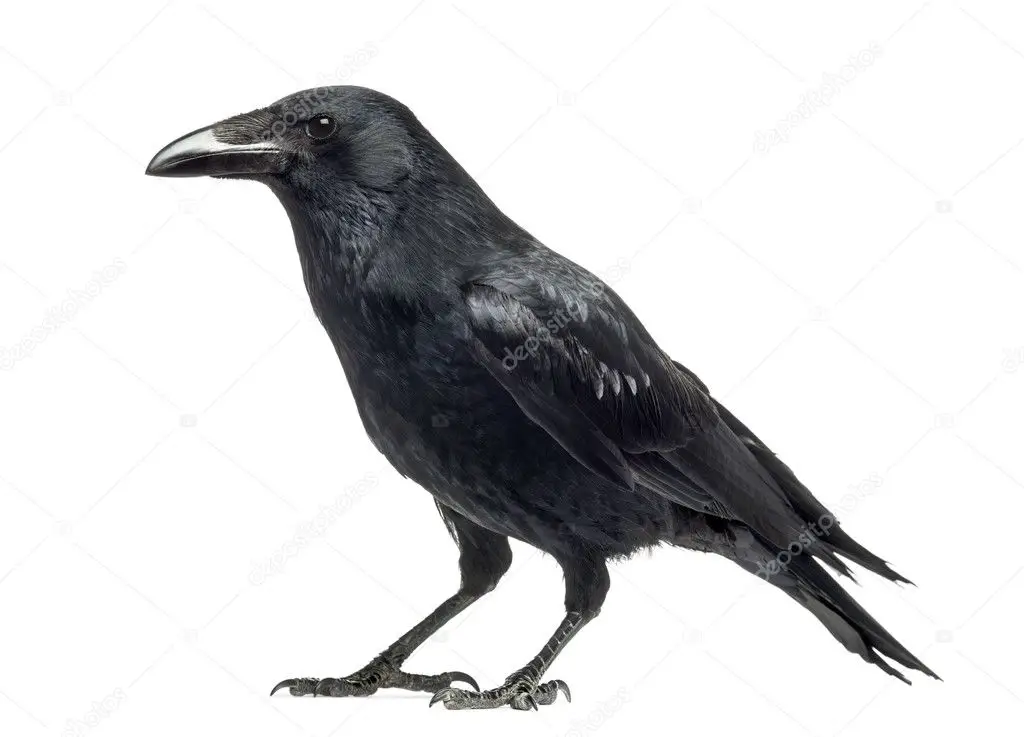
One of Wisconsin’s winter birds, the American crow is an all-black bird with an iridescent sheen. Even its feet, legs, and bill are black.
Since they are adaptable birds, you can find American crows in many habitats in Wisconsin. Some of their favorites are marshes, landfills, fields, woodlands, rivers, and golf courses.
American crows are amongst the smartest birds that you will find in Wisconsin. They can recognize faces and solve problems. Watching them in the backyard is a treat.
Being smart, American crows also have a diverse vocabulary. With this, they can learn different calls.
23. Eastern Bluebird

The Eastern Bluebird is one of the most colorful and beautiful birds that you will find in Wisconsin. Males have deep blue wings and reddish underneath. Females have almost the same colors but are duller.
While some eastern bluebirds are found in Wisconsin throughout the year, most of them are in the state only during the breeding season.
Those who want to see eastern bluebirds in the state should head to meadows. You can also find them on wires, branches, and posts looking for insects to eat.
24. Cedar Waxwing
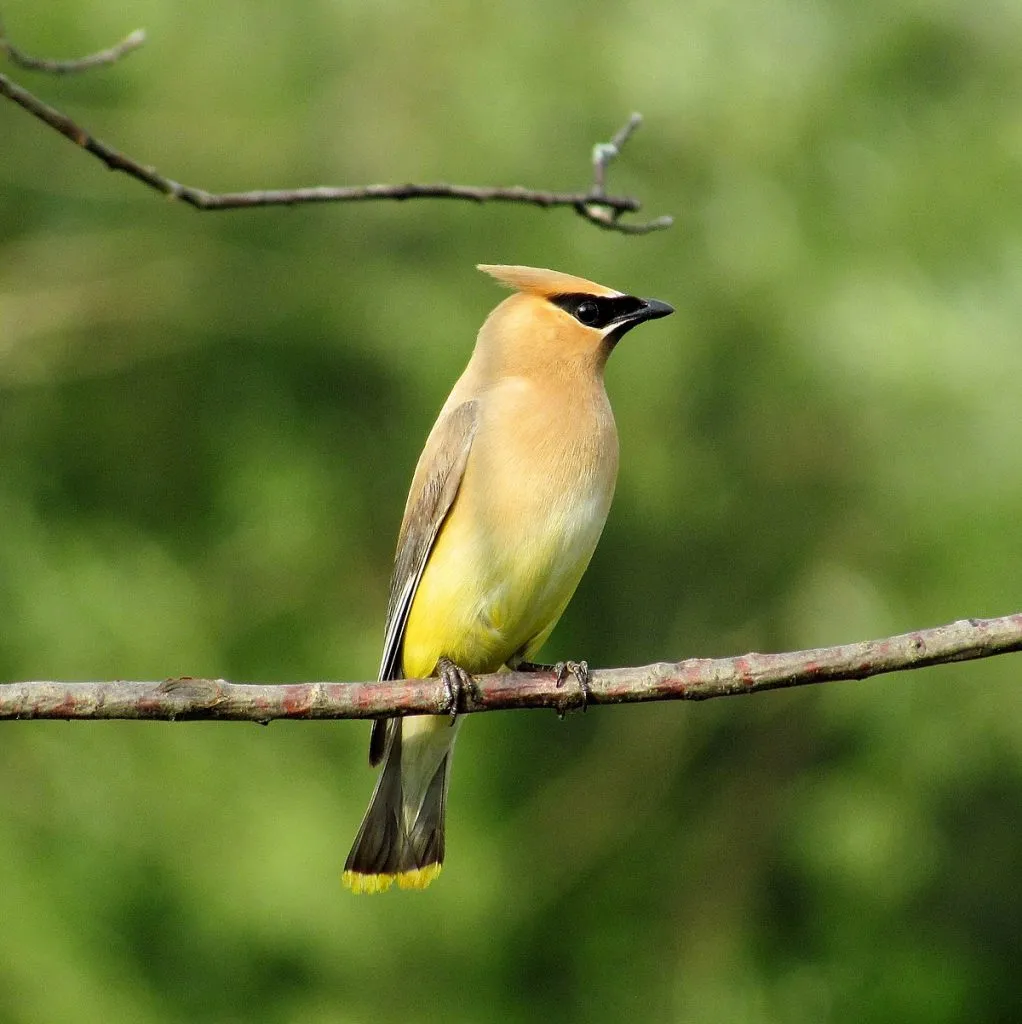
The cedar waxwing has a pale brown head, crest, and chest, which transforms into a light shade of gray approaching the tail, back, and wings. Meanwhile, its belly is a pale yellow, which becomes brighter going to the tail.
Aside from their physical appearance, another easy way to detect the presence of cedar waxwings is to listen to their high-pitched calls.
Is the cedar waxwing a part of your birding itinerary in Wisconsin? You should head to streams, woodlands, and berry bushes to see them strut their stuff.
You can also attract cedar waxwings on platform feeders with fruits. Make your backyard more enticing for these birds by growing hawthorn, winterberry, juniper, and dogwood.
25. Indigo Bunting
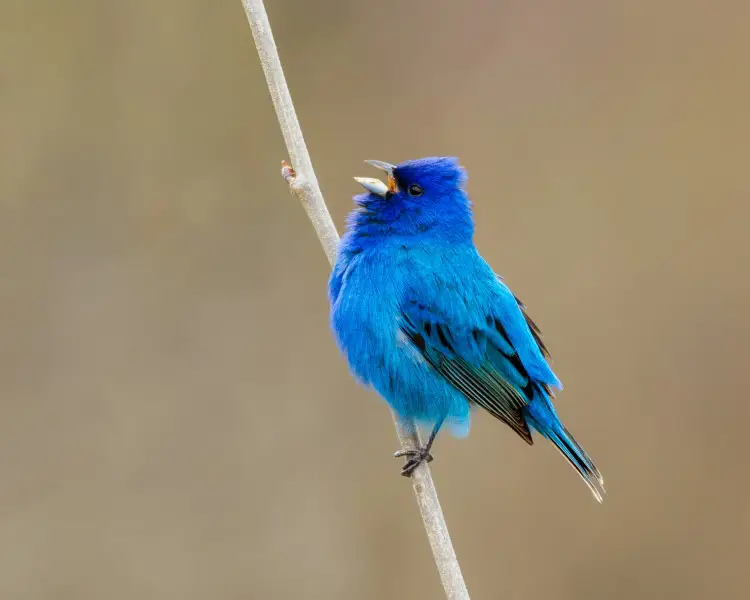
While it is a small bird, the indigo bunting is remarkable and easily noticeable. Thanks to the bright blue body of males with black streaks on the tails and wings, you can quickly identify this bird when you see one. Meanwhile, females have brown bodies.
The most common habitats of the indigo bunting include shrubby areas and weedy fields. These are the areas where the bird looks for insects and seeds to eat.
An indigo bunting can add color to your backyard. Entice them by providing small seeds, such as thistle.
26. Barn Swallow
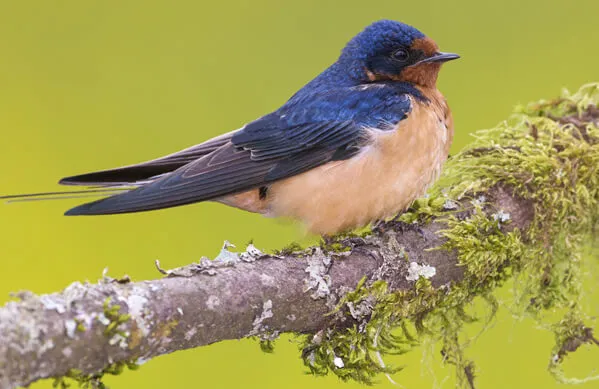
They might be tiny, but barn swallows are enticing. They have a blue tail, wings, and back. On the other hand, the under-body is reddish-brown, including portions of its face. It has long outer tail feathers, giving it a deep fork.
Meadows and marshes are some of the places that barn swallows inhabit. They can also nest in man-made structures. More so, they are highly adaptable, so you will most likely see them almost everywhere in the state.
A conventional bird feeder won’t lure barn swallows to your backyard. Instead, increase the chances that they will visit by putting ground-up eggshells on the ground or setting up nest boxes.
27. Rose-Breasted Grosbeak

It may not be as popular as the other species on this list, but the rose-breasted grosbeak will make another great addition to your must-see birds in Wisconsin.
Adults are black and white with an eye-catching red chevron that extends from its black throat to the breast. Meanwhile, females are brown with heavy streaks.
The stout bill is one of the most noticeable features of this bird. It uses such for eating seeds, insects, and fruits.
Roaming Tip: Fly over to another state and continue your bird adventure there — Oregon Birds.
Watch This!
Frequently Asked Questions
What big birds are in Wisconsin?
Some of the big birds in Wisconsin are red-tailed hawks, sharp-shinned hawks, red-shouldered hawks, Cooper’s hawks, ospreys, great-horned owls, whooping cranes, peregrine falcon, snowy owls, and bald eagle.
How many species of birds are there in Wisconsin?
According to the Wisconsin Department of Natural Resources, the state has over 300 bird species. The exact number is not given.
Where can I see birds in Wisconsin?
Beyond private backyards, Wisconsin is a great destination with plenty of options for bird watching.
Some of the best places to check out are Horicon National Wildlife Refuge, Crex Meadows, Sandhill Wildlife Area, Schlitz Audubon Center, University of Wisconsin Arboretum, Trempealeau National Wildlife Refuge, and Nicolet National Forest.
Conclusion
The Badger State is a birding paradise. From seasoned bird photographers to casual bird watchers, it is a great destination. Wisconsin is home to tiny finches, vocal songbirds, and mighty raptors, among other birds. Whether you are in a vast forest or a small backyard, it is likely that you will see birds.
Are there other birds of Wisconsin that you would like to add to the list? Leave a comment below and help elevate our birding knowledge.

